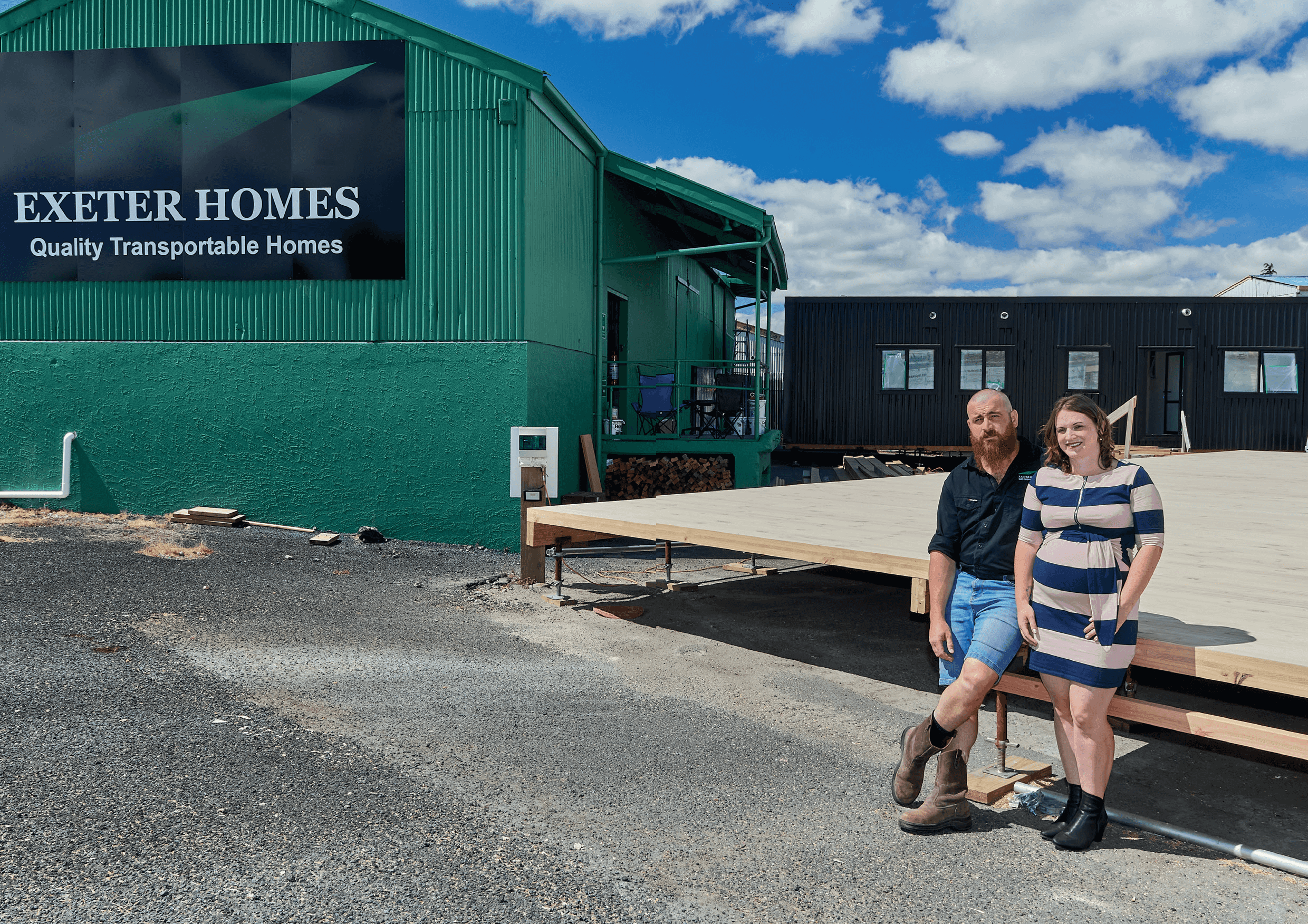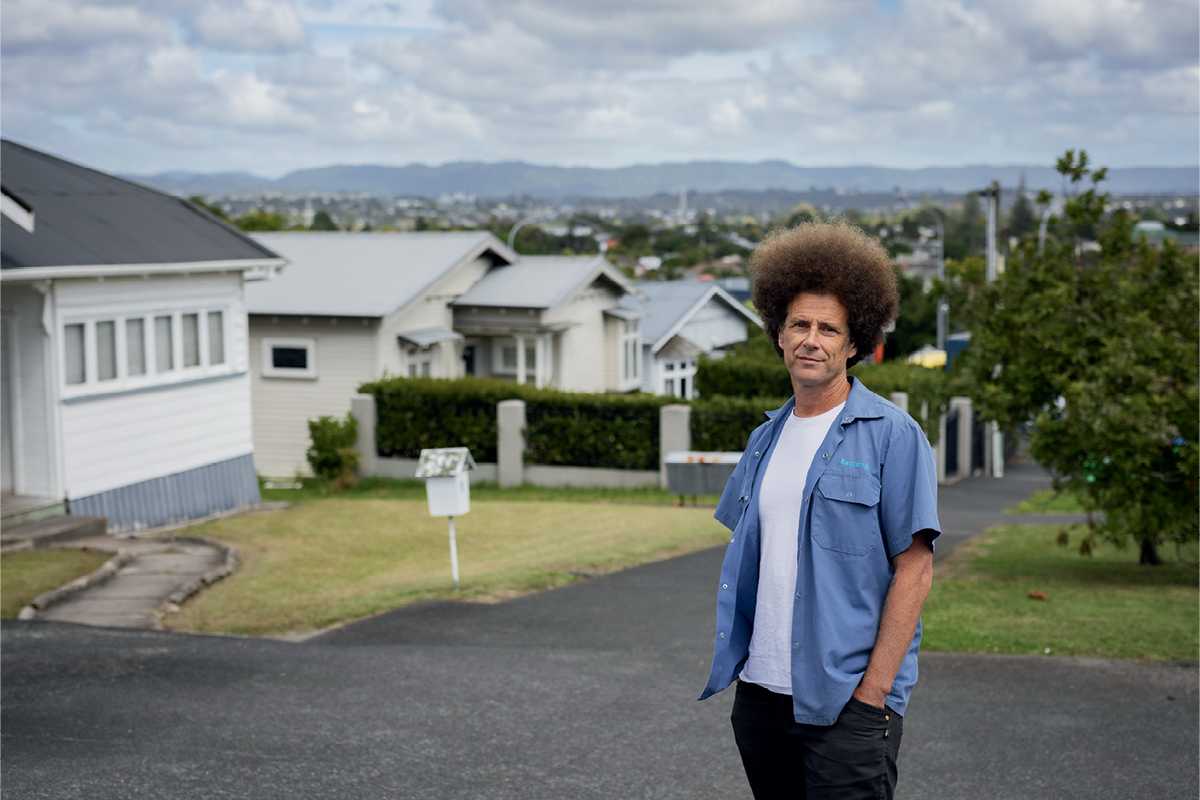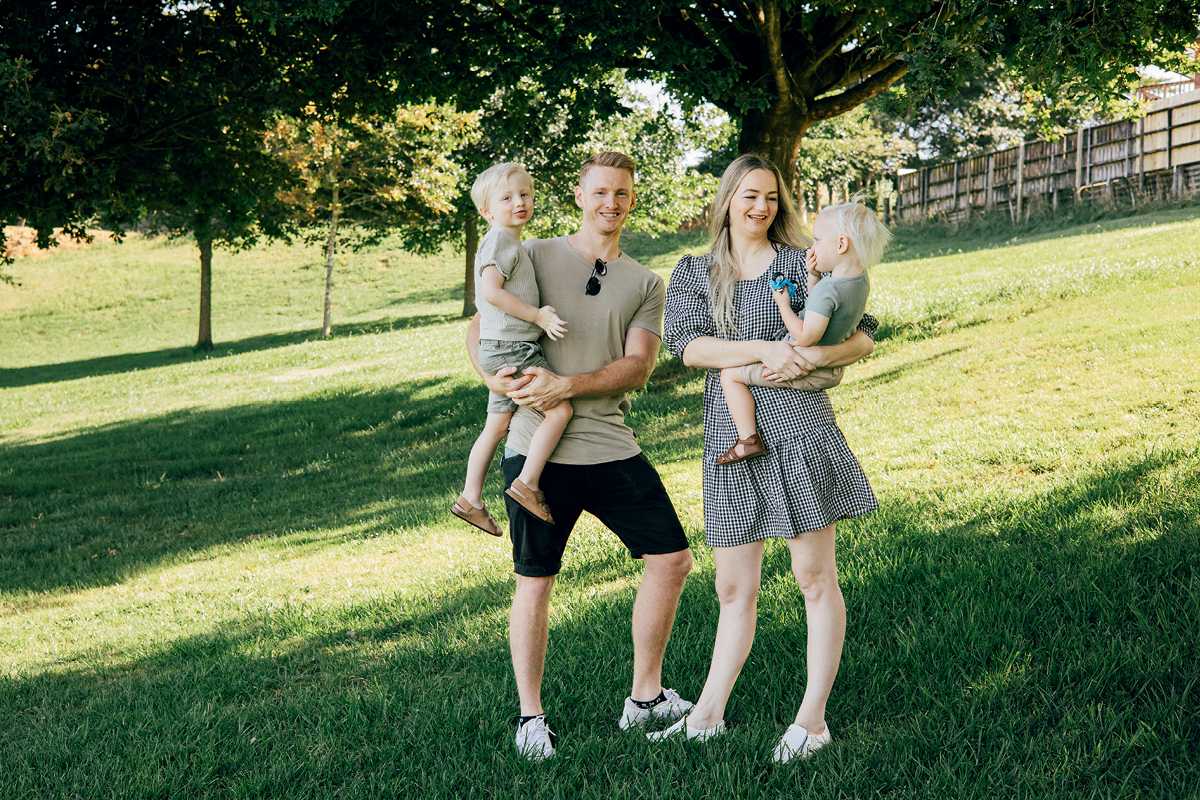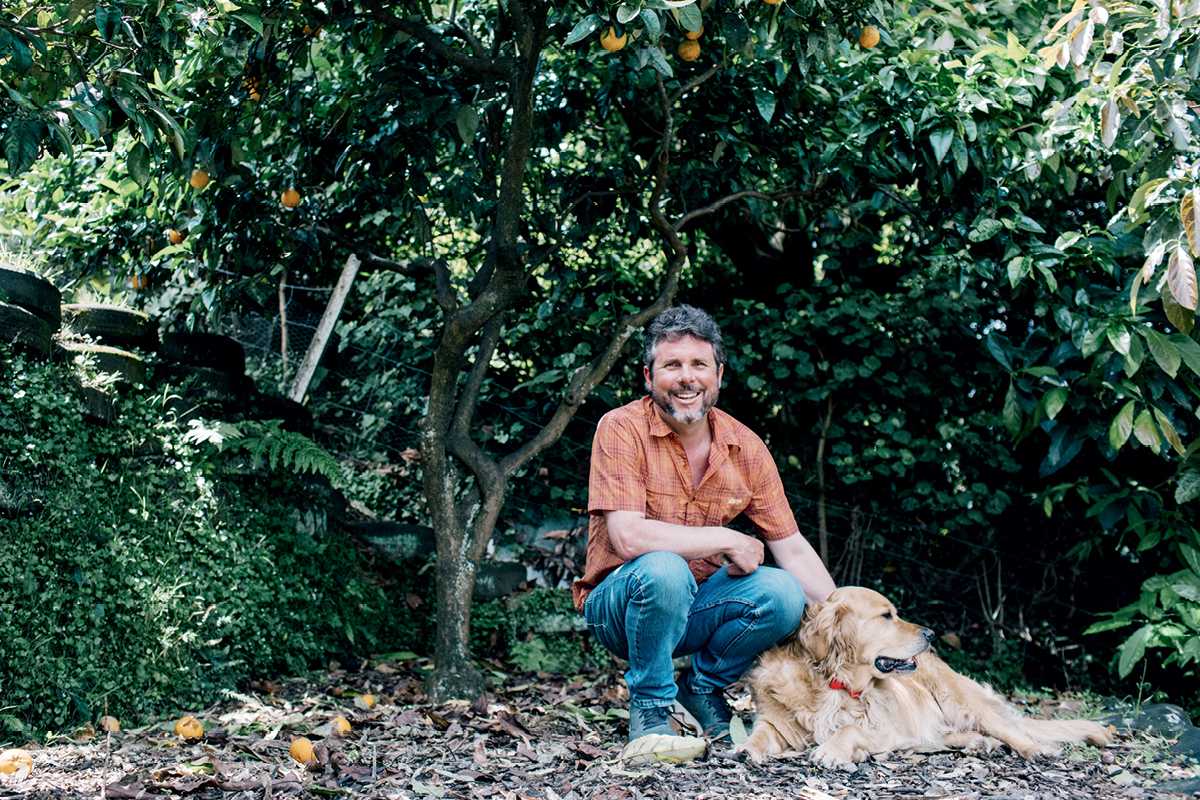
Moving With The Times
Victoria and Chris Travis’ successful relocatable homes business has been boosted by the discovery that new builds are often the best option for investors.
1 February 2022
Chris Travis’ property investment career was conceived in the depths of the earth. The New Zealand miner may have been busy searching for gold, copper or zinc in far-flung locales across the globe, but his mind was on property; something tangible to put his income towards.
“He didn’t need a home for himself in New Zealand but quickly learnt that property was going to be a good long-term investment,” says his wife, Victoria Travis.
“While overseas he engaged his mother to look for a suitable property that he would be able to renovate when he came home on breaks. She actually presented a brand-new home in a new subdivision in Rotorua to him and he managed to negotiate a good deal.”
Chris soon discovered the power of property, as Victoria explains. “[When he returned] he quickly learned that he could pull out equity from property and use that as a deposit for further properties. Quite quickly he purchased two more homes in Rotorua, this time each house required a renovation which he worked on himself.”
Property investing would also turn out to be the catalyst for Victoria and Chris’ successful relocatable homes business, Exeter Homes. Together they have achieved significant success with a new-build venture which has the concept of providing investors with options for their extra land.

In The Beginning
The genesis of this business can be found in 2016, when the pair discovered a half-acre section with a house in Rotorua and with space to spare.
The property had room for another three homes under council zoning rules. They subdivided quickly, and after looking at a wide range of options, decided on three navy-owned state houses from Auckland’s North Shore able to be transported onto the sections.
“The houses cost $50,000 each, delivered to site. We spent about $150,000 to $180,000 on each as we completely gutted the inside of all the houses and changed layouts to modernise them.”
From deciding to purchase the houses to having them on the site took about three months. They then spent about nine-to-12 months working on the houses and getting them ready for sale: completing one at a time, then popping them on the market.
“We learned a heap about driving piles and transporting houses and what goes into that – when they transport a second-hand home the roof has to come off along with any chimneys or heating,” says Chris.
“Once we got them there, we did them up. But there’s a bit more going on than just your standard fix and flip – there are driveways, soak pits, underground cables and plumbing, that sort of thing.”
It was a useful exercise in several ways. Firstly, it was profitable (they made around $400,000 across four homes), but perhaps more importantly it gave then an insight into how to do things better.
“[While] we went with the secondhand idea, when we got to the end of it, we thought we probably would have made more if we’d put brand-new ones on it. That started the thought process behind Exeter Homes,” says Chris.
The couple had previously built up a small “fix and flip” company in Rotorua, and through this period they built relationships with others in the business. One of their friends was Steve Jones, who owned a house removal company based in Mt Manganui. He would go on to sow the seed of a new business idea.
Jones had moved the three navy houses from Auckland down to Rotorua for the first subdivision project. He was so impressed with their final product he made the suggestion they build smaller transportable houses in his yard at Mt Maunganui.
“He was after 60 square metre houses – granny flat type things – and he couldn’t find enough of them,” says Chris.
“I laughed at the idea at first, I’m not a builder so I asked Victoria and she told me to ‘get back on the phone and tell him you’ll do it’.”

High Demand
But it was a different plan from what Jones had suggested. “We thought ‘we’re not just going to stop at 60 square metre houses’ so we got about half a dozen plans drawn up for some three-bedroom, and four-bedroom homes and we thought we might as well build a few.”
They initially based themselves at Jones’ headquarters, but demand was such they made the move back to a larger space in Rotorua.
Additionally, they had a child who was just 18 months old at the time, and Chris was getting up at 5am to head to the Mount and coming home late, and he wanted to spend more time with the family.
So in November 2019, Exeter Homes was born in Rotorua. Just over two years (and a number of lockdowns) on, they now employ seven full-time builders and two contract builders at their site. They have sold 30 homes.
The company was set up with investors in mind, but they weren’t their main buyers at the beginning.
“Lots of investors would come in and chat and spend lots of time working through all their options. Our advice to investors has always been to just do something. Don’t get too worried about the absolutely best possible use of your property if it is going to stop you from moving forward. We’ve seen some investors sitting on empty sections for a couple of years and that is a lot of time paying for land without anything coming in. Doing something is better than nothing,” says Victoria.
Adding a new dwelling can be extremely lucrative for investors sitting on a large section, she says.
“We’ve helped a client [develop their property recently]. What started as one small bedroom house on over a 1,000 square metre site has turned into three properties (a mix of two and threebedroom homes).
“They have increased rent from roughly $450 a week to over $1500 and the cost of the project (excluding land) has been under $500,000. These sites are hard to find but they do exist. Just adding one of our houses to an existing house could increase rent by $500-$600 per week depending on the location and depending on whether you subdivide and add houses or add infill housing, you could be looking at doubling your capital gains.”
She says that people are getting used to smaller sections as there is less to maintain.
“If you purchase nice new homes for infill housing you will attract great tenants as the homes will be modern, warm and dry and perfect for families.”

Quality Rules
The Travis’ own investment journey has run parallel with the development of Exeter Homes.
“At one stage we had three rental properties and several sections/projects we were working on. We ended up selling two of the older houses during one property boom, as they were getting to the point where they would need quite a bit of investment put into them,” says Victoria.
Their current investment plan is to re-stock the portfolio with Exeter Homes; look for sections that can fit two to three houses, and then get three homes per site.
“We hope to start re-stocking this way next year and are planning with this in mind. Given the new government rules it only makes sense to build new.”
Their tagline is “quality transportable homes” and Victoria says quality has always been the key to their success. “Right from the start quality has been very important for us. We could have built more flimsy houses but we’ve gone for more quality than we have probably needed to.”
Chris says: “We build to the highest standard in the code. You can do a good job or a crap job and we saw far more value in doing a good quality job.”
The houses can be moved anywhere in New Zealand, even across Cook Strait, but to date they have been moved around the North Island as far as the Bay of Islands. Others have made their way to the Hawke’s Bay.
Standard spec homes are priced anywhere between $199,000 for a 60 square metre, two-bedroom home to $289,000 for a 110 square metre home with four bedrooms and two bathrooms.
Given the government’s incentivising of new builds (including claiming back interest against tax) the benefits of buying new seem to outweigh secondhand options in many cases. Plus there is less maintenance, and they tend to attract better tenants, says Victoria.
“With a second-hand house the cost is similar, but it takes a lot longer to finish with retrofitting and stuff like that and you still end up with a second-hand house. With a new house you have fewer maintenance issues, you tend to get better tenants and it’s just a lot easier – it just makes more sense,” says Chris.
“What we have also found with investors is they tell us they have some pieces of land that can fit a subsidiary property – but things can get tricky when they want quotes to take to the bank.
“It can cost around $70,000 for site works and things like geotech reports, so we have started to come up with some better ways to support those investors like working with other companies who do that sort of work and give them something they can take to the bank.”
Victoria’s best advice for a property investor is simply “do something”, even if it means starting small.“You may get to the end of the project and think it was better to subdivide and build two full-size houses, but at least if you’ve built smaller you have done something, you’ve increased your value and increased your rental portfolio.”


